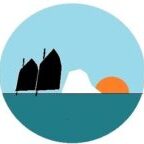ALTIPLANO AND THEN DESERT AGAIN (13 APRIL 2014)
So we left Puno as per the revised plan, and headed to Cusco. The bus journey, surrounded by the usual collection of Andean characters and their colourful bundles of belongings, went through some fantastic mountain scenery, soon leaving the plains and travelling through green valleys between impressive peaks, and passing through country towns, which mostly seemed to be in a perpetual state of construction. At closer inspection, seemingly unfinished buildings would be occupied on the lower floors (and look like they have been for some time), whilst the upper storey would be open to the elements, and bundles of reinforcing bar would point skywards, waiting to be clothed in concrete to support a further level. Meanwhile in the fields were dotted traditional adobe homesteads, much like the one we had seen outside Puno a day or so previously. These were mean dwellings with few comforts, but in one district it was noticeable that every home had a newly-built outside privy of identical design, obviously the product of some government modernising initiative.
We arrived in Cusco in the middle of the afternoon, and having been taken to our hostel by taxi, soon realised that it is a very different city to Puno. The centre consists of closely-packed, beautiful old buildings, many dating back to the rebuilding of the Inca city by the conquistadores, and many actually built on visible Inca foundations. In the centre, fronted by the magnificent Spanish cathedral, is the Plaza de Armas, a beautiful square, only slightly marred by the anarchic traffic circling it, and the touts pushing the tourist restaurants which populate the square, as well as tours, and bizarrely, massages. Once you get asked into your umpteenth restaurant (all with near-identical menus), or hear the word “massage” screamed at you for the nth time, this starts to get somewhat tedious, and teeth have to be gritted and pace quickened.
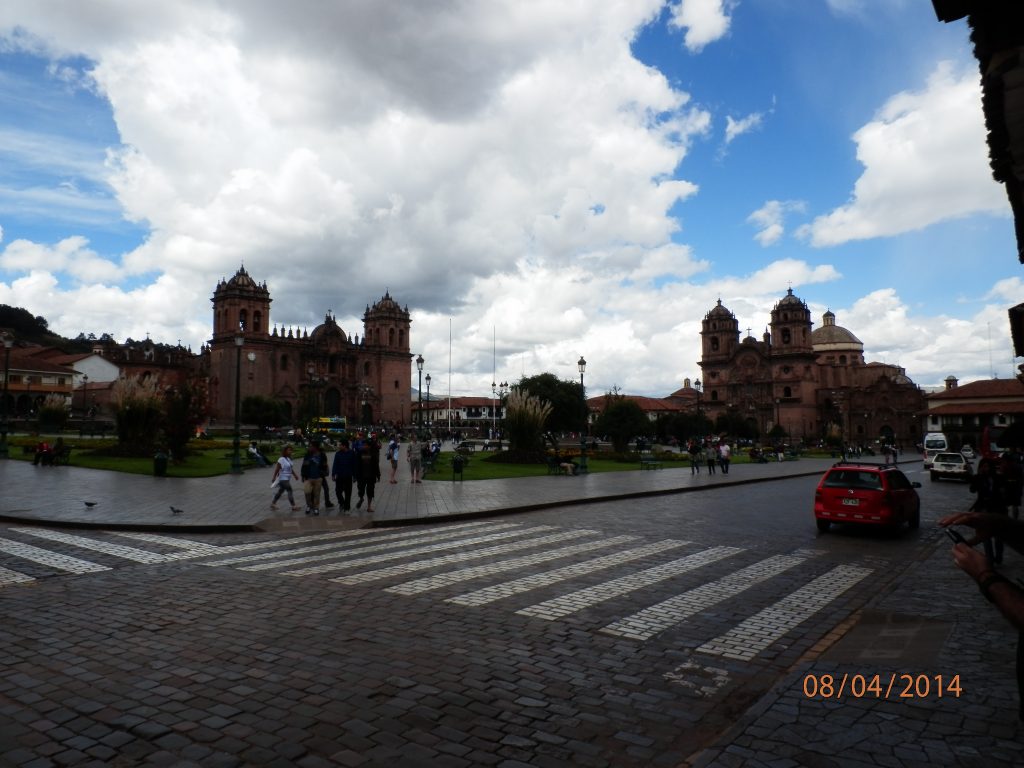
Our hostel was tucked up an ever-narrowing street, and was accessed through an innocuous-looking green door. Once buzzed inside, you entered a narrow passageway, which then opened into an open courtyard. All the rooms opened on to this pleasant area, and ours was of a good size, and even contained some furniture other than just the beds. On the downside, my mattress was obviously in its dying throes, and the showers were dribbles of mostly cold water.
Still, we got settled in, and then went to explore.
We had a full day the next day to look around and make the necessary preparations for our trip to Machu Picchu and our onward journey. Aside from our trip to the bus station, then, and to find the railway station from which we would depart the following morning, we explored the historic centre of the city, bought some souvenirs and went up to the artistic San Blas quarter.
The next day was the major event: our trip up to the ruins of the Inca city of Machu Picchu. It is quite an undertaking to squeeze a visit into one day, as it is remote, and located several hours’ journey away from Cusco. Many people of course choose to take the 5-day trek along the Inca Trail, but this was not really an option for us due to lack of time and budget. Fortunately, there is a train which runs to the foot of the mountain on which the ruins precariously perch. During the dry season, this can occasionally run from the station in Cusco itself, but during the rainy season (which had just started), one of the train operators runs a “bi-modal” service, whereby you catch a bus from Cusco which takes you to a temporary station about 2 hours away, where you then board the train for a further 2 hours. The train, intended for the tourist trade, is expensive but at least comfortable, although the journey is slow and rattly, and the piped music is too loud! The train takes you to a village called Aguas Calientes, from where you either walk (very steep uphill) or take a bus (very steep financially) to the ruins themselves. We opted for the bus due to our lack of time. Once at the top, you show your (also expensive) entry ticket at the gate, and then you’re in.
After a short climb, the city reveals itself to you. It is hard to put into words what this feels like, so I will have to satisfy myself with one word: breathtaking.
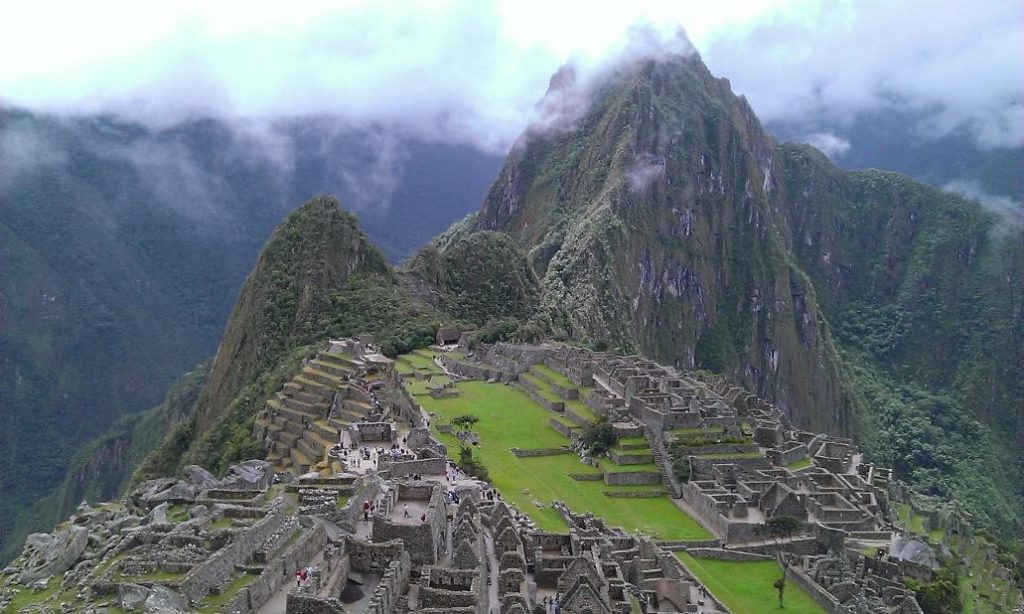
Not only is the surrounding scenery incredible, with steep, forest-clad pinnacles rising from the deep surrounding valleys, but on seeing the ruins for the first time, and realising the extent of the achievement of the Incas in building the place, one is quite overwhelmed.
We spent a good two or three hours exploring the place, visiting the many religious sites, and walking through the residential and “industrial” areas, as well as the terraced agricultural areas, marvelling at the standard of engineering and stonemasonry that has allowed the city to survive for so many centuries.
Eventually we had clambered around sufficiently to require some refreshment, and that being unavailable inside the site, we headed out and down to the village once again to find a sandwich.
Appetites satisfied, we headed back to the station to wait for the train. Fortunately whilst we were on the ruins, the rain stayed off, but it returned whilst we were waiting for the train; fortunately the station had sufficient cover to stay dry.
The journey back to Cusco was long and uncomfortable, and the showers back at the hostel disappointing, but eventually we made it out to a very nice eatery we had found on our first evening for a good meal of Guinea Pig before retiring to the hostel for the night.
The next day we had bus tickets for the 1600 night bus to Nazca, so in the morning we checked out of our room, and, leaving our bags at the hostel, went to see the Inca museum before a pizza lunch on the Plaza de Armas. Recovering our bags, we headed for the bus station to catch the posh bus. On this occasion we had decided to spend a bit more and get full “Cama” seats on the bus. These are usually on the lower floor of the big double-decker coaches, and are wider, fatter, and supposedly recline further than the “semi-Cama” we had used up until now. We were also travelling with a slightly more upmarket company, so the clientele was slightly different from what we had become used to!
True, the seats are bigger and more squashy, but they still suffer from a lack of leg length, with a fancy footrest platform preventing tall people from putting their feet under the seat in front. I can only surmise that your average Peruvian is somewhat stumpier than I am.
Added to the discomfort caused by my length, my guts had also decided to play up again, and although spared having to “go” regularly, I had a certain amount of pressure build-up which was enough to give me discomfort and a poor night’s sleep.
It was nice therefore to get off the bus in Nazca at 0600, and after a short explosive episode in the bus station heads (a strong stomach, nose clip and own bog roll required), be collected by the owner of our hostel. We were shown our very comfortable (en-suite!) room by Juan, the polyglot owner, and put our feet up for a few hours.
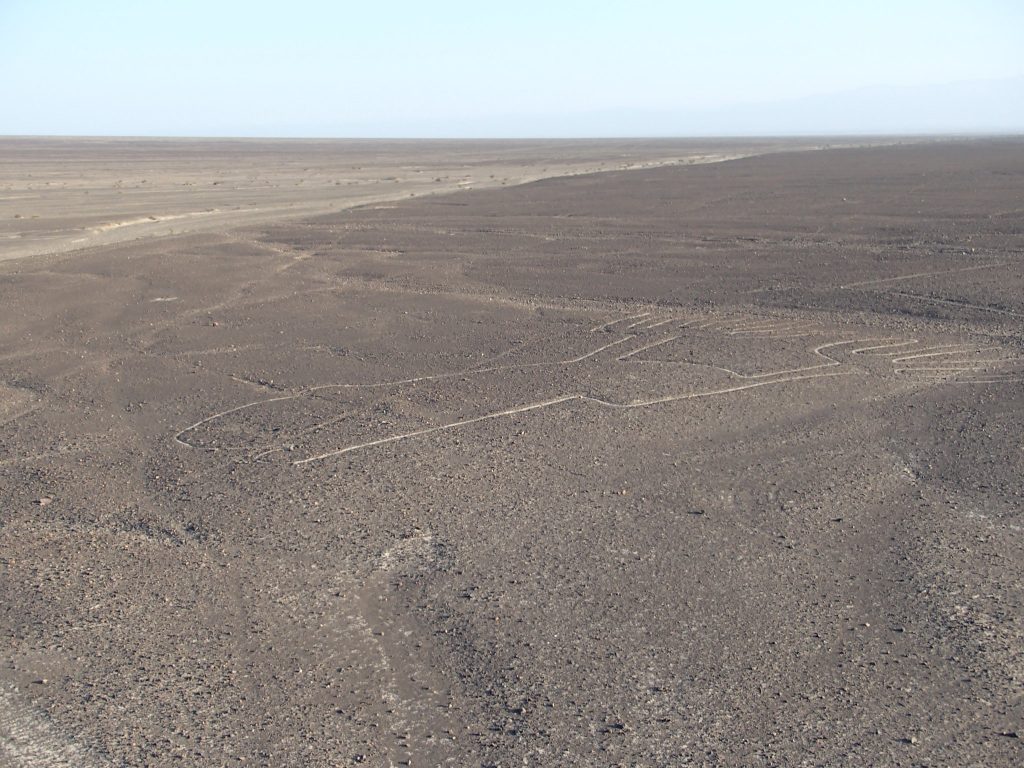
The main reason for anyone to stop in Nazca, which is a bit of a fly-blown desert town, is to see the nearby Nazca Lines, a series of straight lines, geometrical, zoomorphic and anthropomorphic designs in the desert surface, left by the pre-inca Nazca civilisation. These are only visible from the air, and most tourists book a flight over the area in a light aircraft. We, however, being somewhat impecunious, opted for a driving tour to a viewing tower erected next to a few of the geoglyphs, which gives you just enough height to pick them out. This tour and another, to the Nazca necropolis at Chauchilla, we booked through Juan for the following day. The rest of the first day we spent trying to find the local museum and failing, seeing what there was to see of town, relaxing, and in the evening visiting a planetarium in one of the nicer hotels, which ties together the lines with some of the astronomical theories which have been produced to explain their existence.
Day 2 in Nazca, and we were picked up mid-morning by our guide to head to Chauchilla. This is an extensive site containing tombs of the Nazca people which are up to two thousand years old. Unfortunately, the site was first discovered by grave robbers, who looted many of the tombs and left the area strewn with bones and millennia-old scraps of cloth and pottery. Other tombs, however, were left intact, and have now been excavated, and left open with a modern shelter built over the top. What they contain is quite surprising.
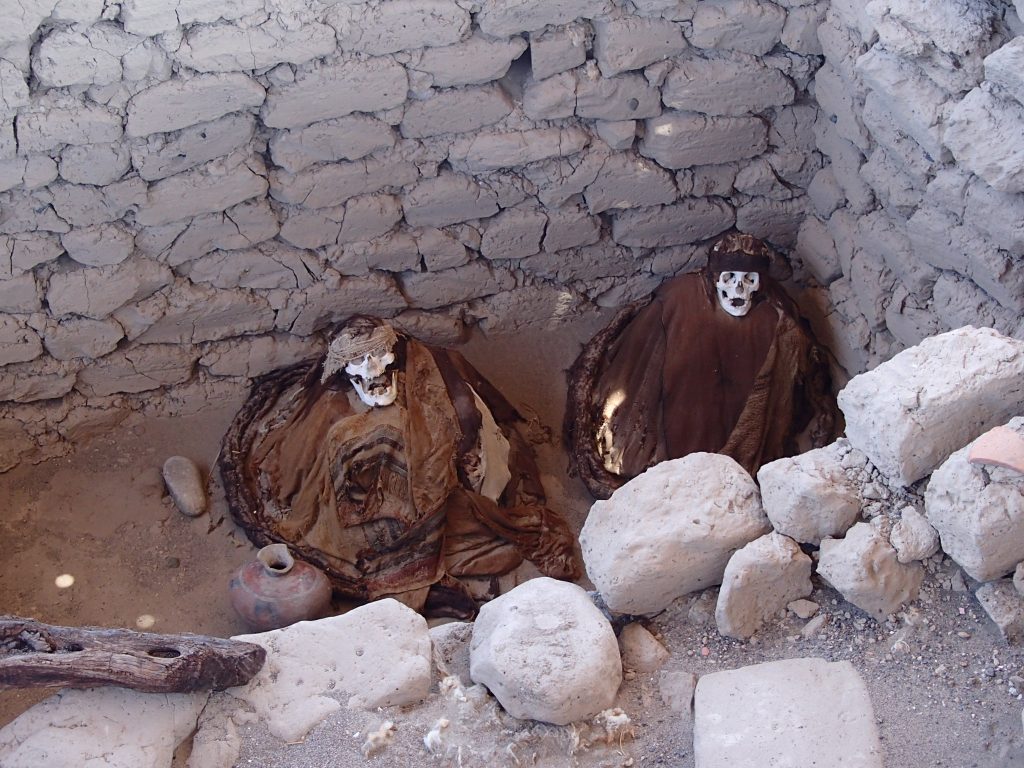
Each tomb contains one or more mummified bodies, the skulls exposed and therefore generally bleached bare bone, but the rest of the body is wrapped in cloaks or blankets, the skin and hair well-preserved, all sitting in the foetal position. Whilst it is a slightly gruesome sight, it is incredible to see such well-preserved mummies, surrounded by their belongings, in some cases including bowls of food for the afterlife
We returned to town, had a large lunch of Tacu-Tacu (a local speciality of rice and beans), and then in mid-afternoon were collected again, this time for our tour to the lines. We were driven once again out into the desert, first stopping at the Maria Reiche museum, commemorating the work of a German mathematician who made her name as an expert on the lines, bringing them to government attention, leading to their adoption as a UNESCO-protected site. She devoted her whole life to surveying and studying the lines, and was the proponent of some of the astronomical theories surrounding their existence. As a museum, it was small and mediocre, but gave us some more insight into the civilisation that created the lines.
Strangely, our tour guide Johnson, despite being an archaeologist, was unable to give us very much valuable information beyond the blindingly obvious! Afterwards we went to the mirador tower (built by Reiche), and picked out some of the lines, disappearing into the distance in many directions, and a couple of the geoglyphs. The tower is just tall enough to make them visible, but I can see how a flight would give you a much better overall picture, as well as airsickness and a heart attack to your insurers.
Afterwards we had a quick walk up a nearby hill (or mound would be a more appropriate description), from which we could pick out some more lines and shapes.
There is no doubt that the lines are one of the archaeological mysteries of the world, and their intricacy and accuracy is quite astounding, especially when you consider the resources available to the civilisation which created them.
After a light supper we had an early night in readiness for our 0630 bus to Lima, on board which I am writing this!
